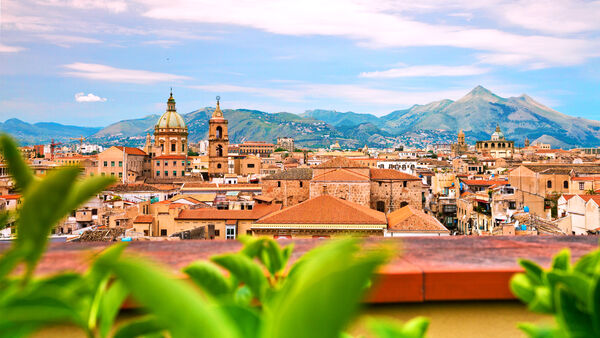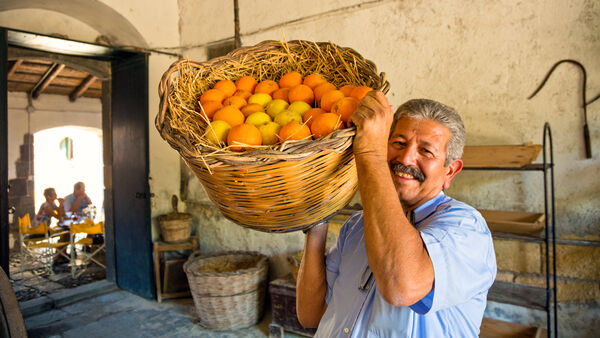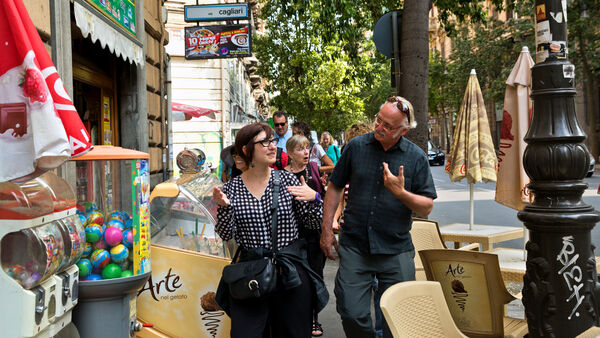Sicily’s Spicy, Slice-of-Life Street Scenes
For all its history and scenery, Sicily's most fascinating sight is its uniquely spirited people.
By Rick Steves


It's no wonder that Sicily isn't most travelers' first taste of Italy. It lacks big-name sights on the scale of St. Mark's Square in Venice or the Roman Colosseum. Its art museums and churches are low on Michelangelo, Botticelli, or any other Renaissance big shots. And the place must lead Europe in litter. But if what you appreciate most about Italy is its people, tempo, and joy of living, you'll dig Sicily.
On this island just off the tip of Italy's "boot," the most fascinating sight is, hands down, its uniquely spirited way of life. In spite of pressure from the Italian government and European Union to conform to modern standards and protocols, the siesta persists and motorbikers' hair continues to fly in the Sicilian wind. Stroll the island's streets with your eyes, ears, and nostrils open for scenes you can't possibly experience anywhere else. Don't just visit Sicily — live it.
Palermo, Sicily's intense capital, is an urban highlight. Arab-influenced street markets thrive in nearly every neighborhood. Here, boisterous merchants sing out what's for sale. Animals hang like anatomy lessons, sliced perfectly in half. Fichi d'India, the fist-sized prickly pear that tastes like a cross between a kiwi and an orange, are peeled and yours for less than a euro.
Go on a photo safari through Palermo's urban jungles. I particularly love the vibe in the city's vertical neighborhoods, where small apartments stack high above the side streets. As you venture down busy alleys, the warmth and excitement of daily life will give you smile wrinkles. If you stop to chat long enough, six floors of balconies may well fill up, each with its own waving family.
On my first visit here, I remember finding a wobbly stack of tenements facing one another, a faded rainbow with lots of laundry and people hanging out. One wave worked wonders. Walking around, craning my neck upward, I felt like a victorious politician among hordes of supporters. Eager to be in my photos, mothers held up babies, sisters posed arm-in-arm, a wild pregnant woman stood on a fruit crate while holding her bulging stomach, and a wrinkled old woman filled her paint-starved window frame with a toothy grin.
Cefalù is my favorite small-town stop on the island. Steeped in history, boasting a fine beach, and bustling with color, it's dramatically set on a craggy coast under a pagan mountain. On my first visit I dutifully toured Cefalù's museum and cathedral, but soon realized the real attraction is on the streets.
As in the rest of Sicily, Cefalù's scene gets especially vibrant in the evening, when the air cools and people reemerge outside en masse.
On one visit here, as the sun grew red and heavy, I noticed how the town's old women — still in bathrobes, it seemed — filled their balconies as the young people clogged the pedestrian (and Vespas)-only main drag. Tsk-tsking at the age-old flirting scene, the women gossiped about the girls below.
But my Sicilian friend — ignoring the girls — interrupted my eavesdropping to tell me of the motorbike he was lusting after. "It's a classic Vespa from the '70s…with a body that's round like a woman's." Just then a guy galloped up on his very round and very blue classic Vespa. He declared, "It's the only Vespa I've ever owned. I got it when I was 14. That was in 1969. The year man first walked on the moon, that was the year I first rode this Vespa." My friend and a few other guys gather almost worshipfully around. To them, the old women in the balconies and the miniskirted flirts suddenly no longer existed — nothing mattered but that very round and very blue Vespa, drenched in Sicilian testosterone.
Nearby, I stopped at a café that overlooks the beach. I sipped my latte di mandorla (almond milk) with locals who seemed to be posted there on duty, making sure that big red sun went down. Little wooden boats, painted brightly, sat plump on the beach. Above them, the fisherman's clubhouse filled what was a medieval entry through the town wall. After finishing my drink, I wandered in.
I was greeted warmly by the senior member, "Il Presidente" — many of the men here go by nicknames and often don't even know their friends' real names. Since the 1960s, Il Presidente has spent his nights fishing, gathering anchovies under the seductive beam of his gas-powered lampara. As he took the pre-Coleman stove vintage lamp off its rusty wall hook, I could see tales of a lifetime at sea in his face. As he showed me the ropes he wove from local straw and complained that the new ropes just weren't the same, I lashed him to the rack of memories I'd take home from Sicily.

